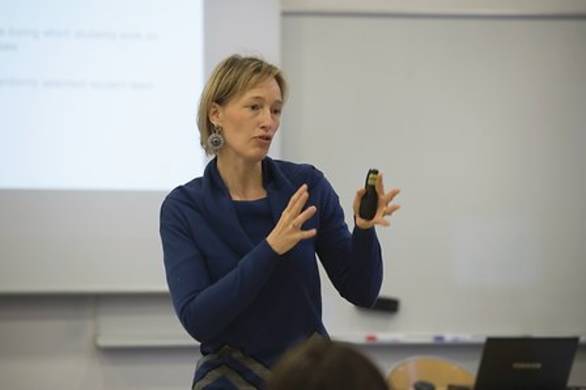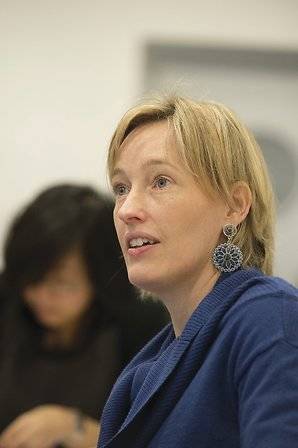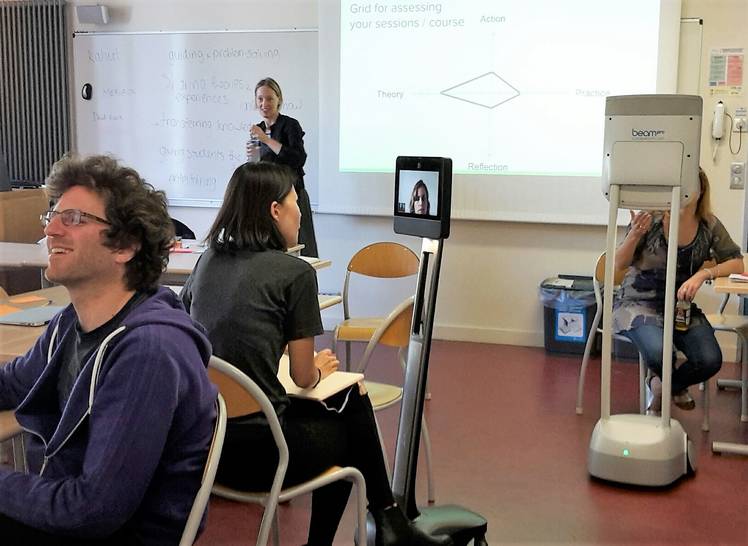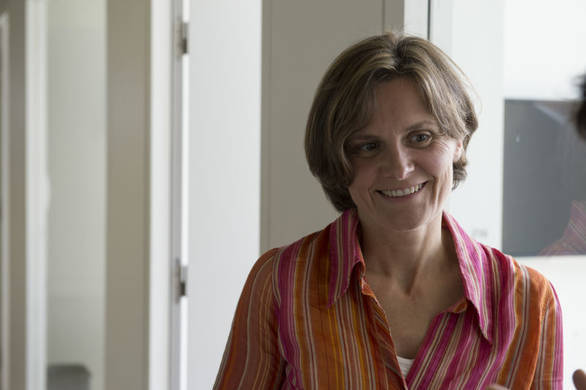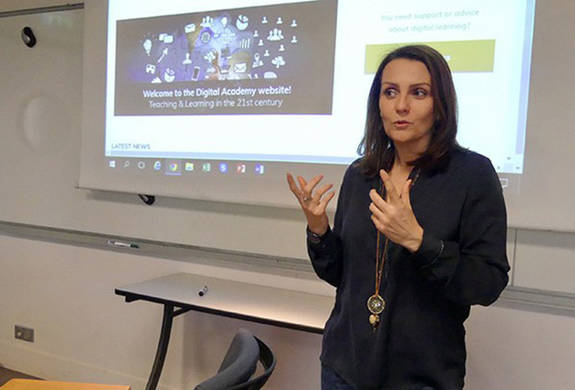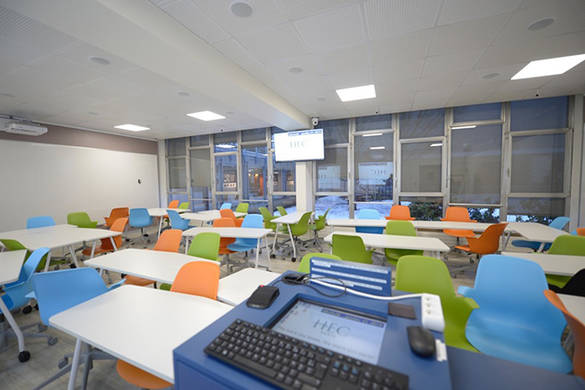Hello Kristine. What are the implications and challenges of training researchers to teach?
Ph.D. programs are good at developing the research skills of their students, but we also train them to be teachers. What this essentially means is that they need to become managers of learning situations, an approach to teaching I adopted from Michel Fiol, HEC Paris Emeritus Professor of Accounting and Management Control, who has been very involved in the training in pedagogy for PhD students. Often, the first thing to help them with is unlearning the habits they have developed while presenting their research projects. Giving a research seminar for peers is not the same thing as teaching an entire course to Master or MBA students!
Can you describe how we teach pedagogy to Ph.D. students at HEC Paris?
The twenty-hour pedagogy course consists of both theory and practice and offers a mix of lectures, exercises, workshops and discussions.
The "Theory" part
We first address the basics of pedagogy: what is learning? What is teaching? What are the different learning styles, teaching methods, and pedagogical tools?
This seems trivial, but our Ph.D. students often have very different educational experiences (due to their international backgrounds and diverse disciplines), which brings richness to our collective reflections. You cannot teach mathematics and management in the same way, which implies an adapted learning design. This introduction also helps us to assess what they know in terms of pedagogy, and to adjust the course to their needs. For example, students who already have had some teaching experience often like to exchange about classroom discipline, and how to deal with “difficult” students.
The "Practice" part
The teaching lab consists of a 20-minutes teaching session by each participant, followed by a collective reflection about the learning design and implementation (including classroom management). We pay close attention to how the “teacher” attracts students’ attention with a hook, how he/she makes the learning more dynamic by means of interactions, and on whether the teacher assesses whether the learning objectives were achieved. Like this, each student gets to practice teaching and receives feedback from his/her peers. Caroline and I act as session facilitators and we offer theoretical frameworks and practical tips to further enhance learning.
Can you describe how you help students to prepare for a teaching session in the Teaching Lab?
Yes. We base the teaching-learning process on four pillars: defining objectives, designing the learning scenario, implementing it by teaching, and evaluating the learning.
First, we define objectives. You have to understand the audience and determine what they need to learn. Before designing your learning scenario, you need to ask yourself who the students are that you will have in your course. What is their background? What do they know from other courses or experience? What are their expectations, their emotions vis-à-vis a topic, their biases toward their success? For example, students taking a course with a lot of mathematics may think they will not understand. This influences how they will approach the learning material and which kind of guidance they need from you.
You need to try to take as much into account as possible, before you have even started with your learning design. This is often an eye-opener to the PhD students who may wrongly believe that you can give the same course to any audience (undergrads, MBA, executives).
Secondly, we design the learning scenario. Once you have determined the learning objectives and you know your students’ profile you can start designing your learning scenario. Here, it is very important to be modest about the material you will be able to cover. Many professors are passionate about the topics they teach – this is great, but there is also a danger. Teaching is like filling a glass of water, at one point, the glass is full and everything else that you try to pour into the glass will be spilled. To increase students’ absorption of knowledge, it is also important to vary teaching approaches, to alternate theory with exercises, and lectures with discussion. We encourage our students to be creative in their learning designs and to try out methods that they would not naturally choose. The teaching lab is a safe environment to experiment in front of a benevolent audience.
Thirdly, we implement the learning scenario, meaning that we put it in practice in the classroom. We advise our students to carefully plan their session with the help of a teaching grid. Still, our students need to be able to improvise and adapt to the circumstances the learners find themselves in. What happened the evening before? What occupies their mind? You have to be flexible. The planned content does not always follow its plan. You need to learn how to deal with uncertainty.
Finally, there is the evaluation phase. Evaluation is something we tend to postpone to the end of a course, but it is essential to check regularly where students are in their learning. You can do this through formative assessments, which do not count towards a grade, but which give both you and the student an insight as to whether they have understood the material or not. Like this, if many students score poorly, you can adapt your course before it is too late.
In this context, digital tools can be very useful, for example to do small online quizzes. This is what we do in our new online Master in Science in Innovation and Entrepreneurship (MSIE).
What role does technology play in this pedagogy course? Do you address it?
The use of digital tools does not change anything in the preparation of your course. You have to think about the same four pillars. Caroline Meriaux adds her point of view: "Indeed, some learning tools are innovative without being digital. However, we use several technologies in this course to show students how technology can be used for learning purposes. One example is a reading assignment that students need to do before coming to class. To make sure that all have read it and reflected on it, we ask them to post a comment on the "blackboard" discussion board we have created. The instructions are the following: "What is your main take-away from this article? Do you agree with the author? Did anything surprise you?" Posting a comment is mandatory and we use their comments as discussion starters in class. We have also used a telepresence robot to enable students who cannot make it to campus (e.g., research visit abroad) to attend the course." We now also film the teaching sessions during the course, for the students to be able to view it afterwards.
How does the course affect the Ph.D. students’ vision of teaching?
I believe that a lot of them walk away with the knowledge that teaching is more complex than one might think. It entails much more than mastery of the subject matter and developing content. Teaching is also about managing processes, emotions, relationships and context. Everything is complementary. Based on the Teaching Lab experience, they also realize that successful teaching depends on thorough preparation. For most of them, the 20-minute session demands one whole day of preparation time.
Do you have some final suggestions on how to improve teaching and learning?
I believe that we could exchange more about our teaching practices. To share tips, but also to discuss challenges. Many of us feel quite alone when we face difficulties in the classroom. In the end, many professors love to teach and innovate, so why not join efforts and improve together.
Finally, I feel strongly about the fact that improving learning is not only in the hands of the professors. Students should also question their role in the learning process. With the rise of the flipped classroom, customized learning scenarios, and online learning formats, students can no longer be passive spectators. They need to take active part in the learning process by discussing, questioning, experimenting, and putting in practice, all the while being accompanied by the professor-as-facilitator.
